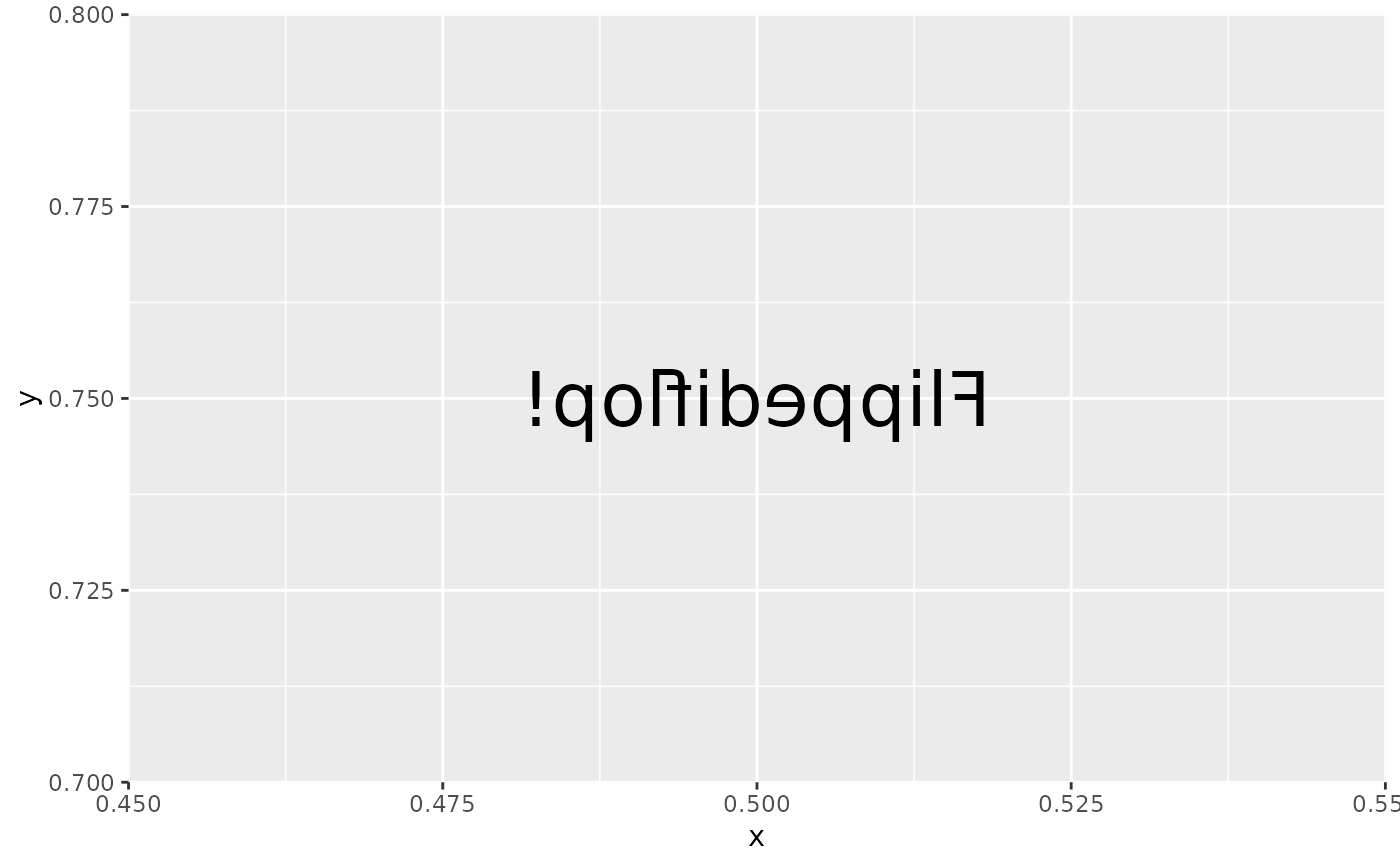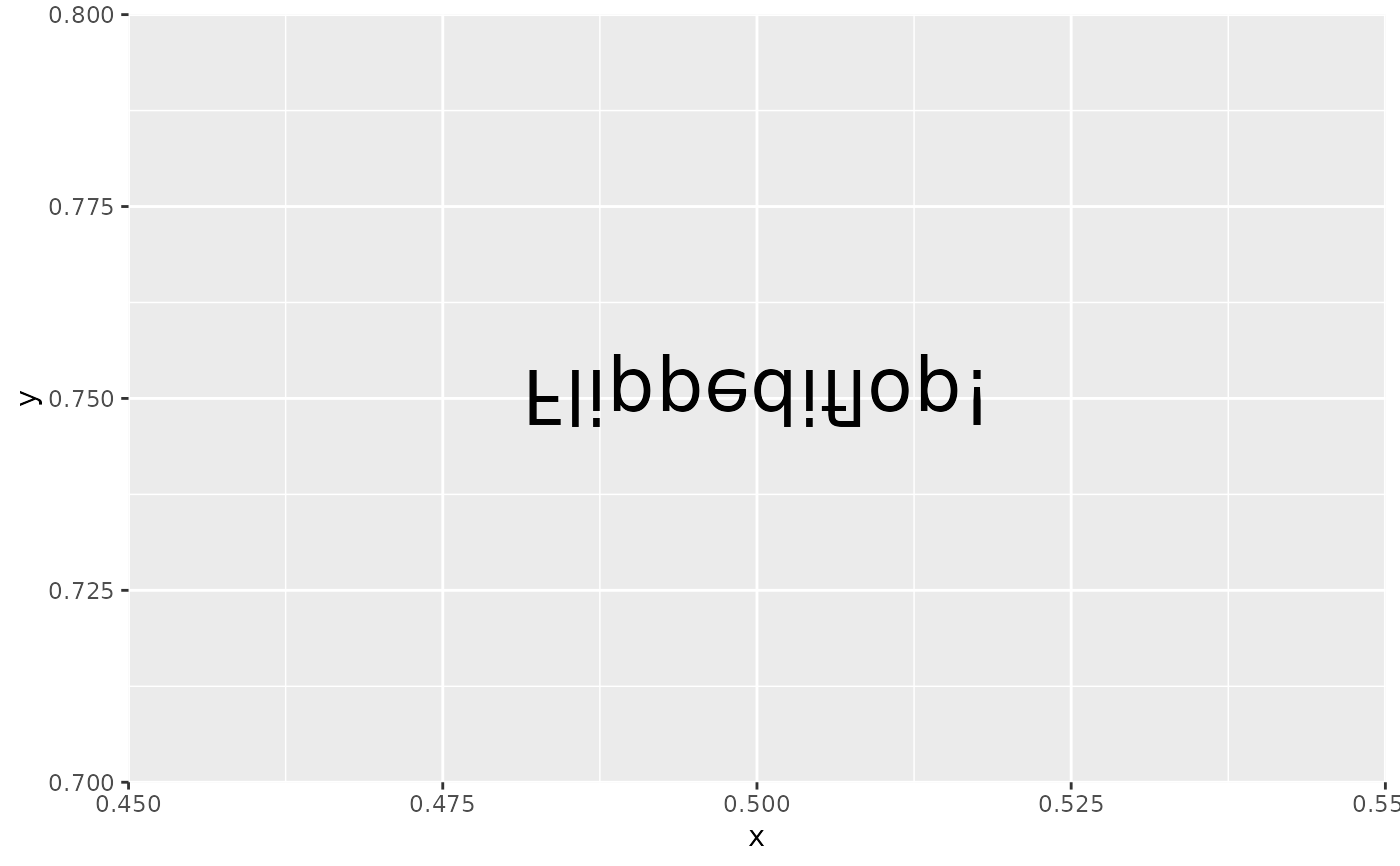This function allows you to apply a custom filtering function to a layer. The
function must take a nativeRaster object as the first argument along with
any other arguments passed to .... Be aware that the raster spans the full
device size and not just the viewport currently rendered to. This is because
graphics may extend outside of the viewport depending on the clipping
settings. You can use get_viewport_area() along with all the other raster
helpers provided by ggfx to facilitate working with the input raster. See the
example below for some inspiration.
with_custom(x, filter, ...)Arguments
Value
Depending on the input, either a grob, Layer, list of Layers,
guide, or element object. Assume the output can be used in the same
context as the input.
Examples
library(ggplot2)
flip_raster <- function(raster, horizontal = TRUE) {
# Get the viewport area of the raster
vp <- get_viewport_area(raster)
# Get the columns and rows of the raster - reverse order depending on
# the value of horizontal
dims <- dim(vp)
rows <- seq_len(dims[1])
cols <- seq_len(dims[2])
if (horizontal) {
cols <- rev(cols)
} else {
rows <- rev(rows)
}
# change the order of columns or rows in the viewport raster
vp <- index_raster(vp, cols, rows)
# Assign the modified viewport back
set_viewport_area(raster, vp)
}
ggplot() +
with_custom(
geom_text(aes(0.5, 0.75, label = 'Flippediflop!'), size = 10),
filter = flip_raster,
horizontal = TRUE
)
 ggplot() +
with_custom(
geom_text(aes(0.5, 0.75, label = 'Flippediflop!'), size = 10),
filter = flip_raster,
horizontal = FALSE
)
ggplot() +
with_custom(
geom_text(aes(0.5, 0.75, label = 'Flippediflop!'), size = 10),
filter = flip_raster,
horizontal = FALSE
)
